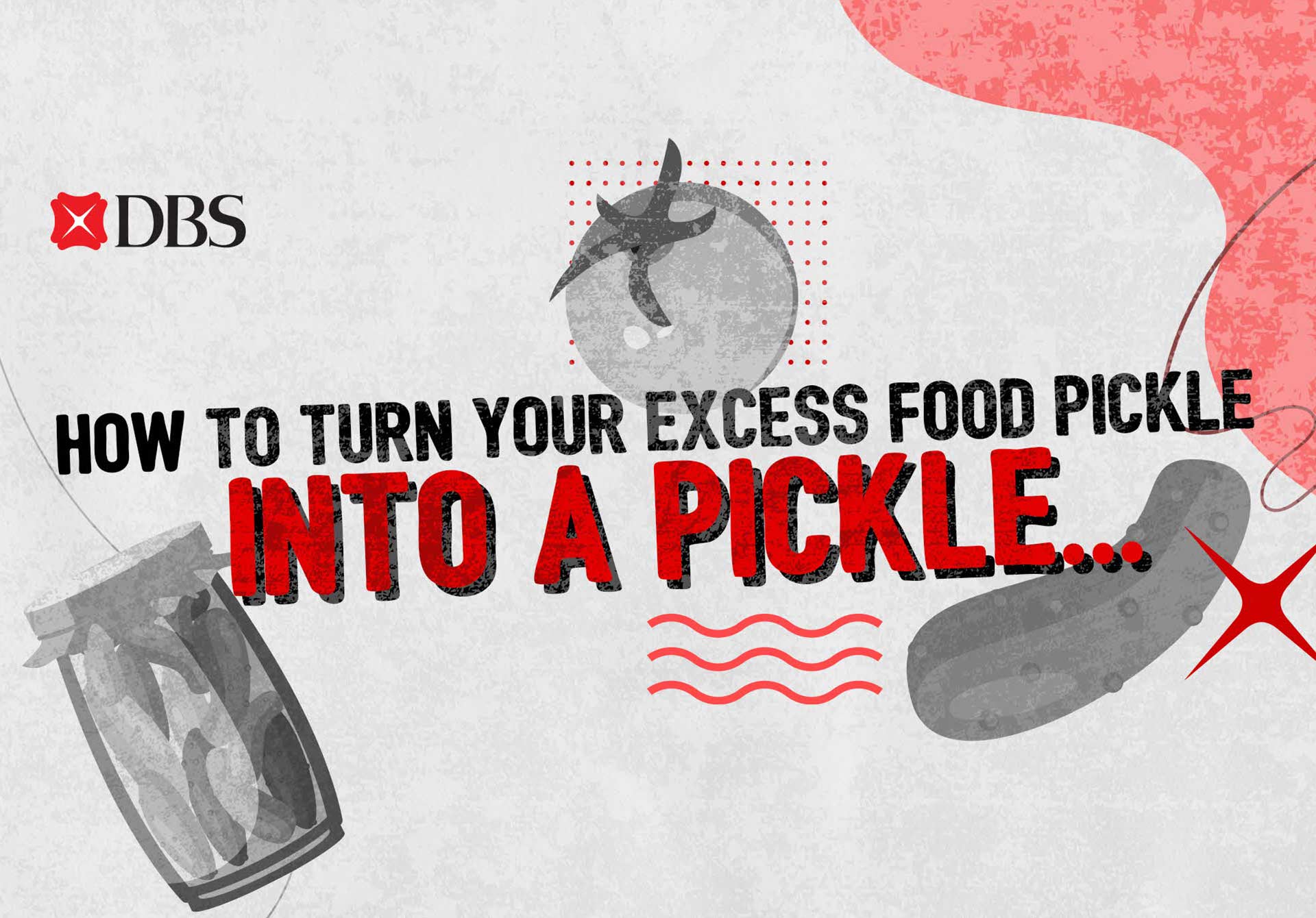An art as old as time, pickling spans across thousands of years, with different cultures each having mastered a version to call their own. Once born of the need to preserve food, pickles are now commercially made for their lip-smacking flavour. But in today’s context, we still find ourselves needing to preserve our perishable food from going to waste.
A fifth of Singapore’s fresh food goes to waste, including fruits and vegetables, both of which are excellent candidates for pickling.
The next time you’re out of ideas on what to do with your extra greens, try pickling for a change. It’s mostly straightforward, and usually involves soaking food in a liquid solution to halt the growth of bacteria. This allows the food to last for months and even years, while lending a distinct flavour.
Here are some of the easiest pickles to make.
Something smells kimchi
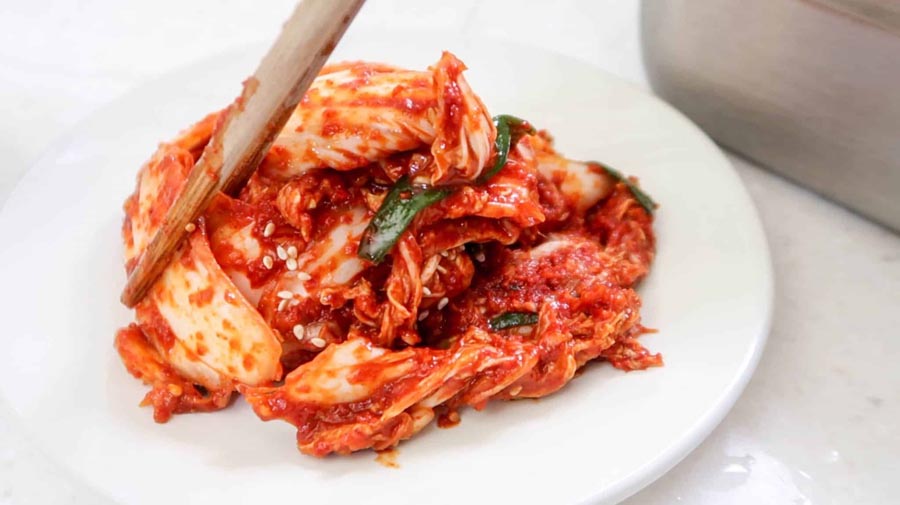
Image by Futuredish
Kimchi is a variety of pickles that you’d typically find served as an accompaniment to Korean food. This pickle is made of sweet, spicy, and sour fermented cabbage. It’s also considered to be a probiotic food.
Make yourself an easy kimchi:
- Cut and dice 1 large head of green cabbage or napa cabbage, separating the cabbage layers and rinsing. Then, sprinkle sea salt all over and toss well. Let this sit for an hour or two.
- While your cabbage sits, blend 3 cloves garlic, 1cm of ginger, 7 tablespoons of chilli flakes, 1 tablespoon of sugar, and 3 tablespoons of salt, with 6 tablespoons of water.
- Optional umami: add 3 tablespoons of anchovy sauce and 1 tablespoon of shrimp sauce to the blender!
- In a mixing bowl, toss your blended puree with your salted cabbage, making sure your seasoning has been thoroughly incorporated.
- Transfer your freshly made kimchi into an airtight container. Then pour ½ a cup of water into your mixing bowl and swirl around to collect your residual seasoning paste. Pour the liquid it back into your kimchi container!
- Leave your kimchi out overnight, and then transfer it to the fridge. For maximum pleasure, let it ferment in there for two weeks.
Be an achar auntie
Nonya achar, typically eaten with rice (and given as gifts by loving aunties) is a real show stealer. With its nuanced blend of flavours, it’s a sure-fire way to elevate any meal.
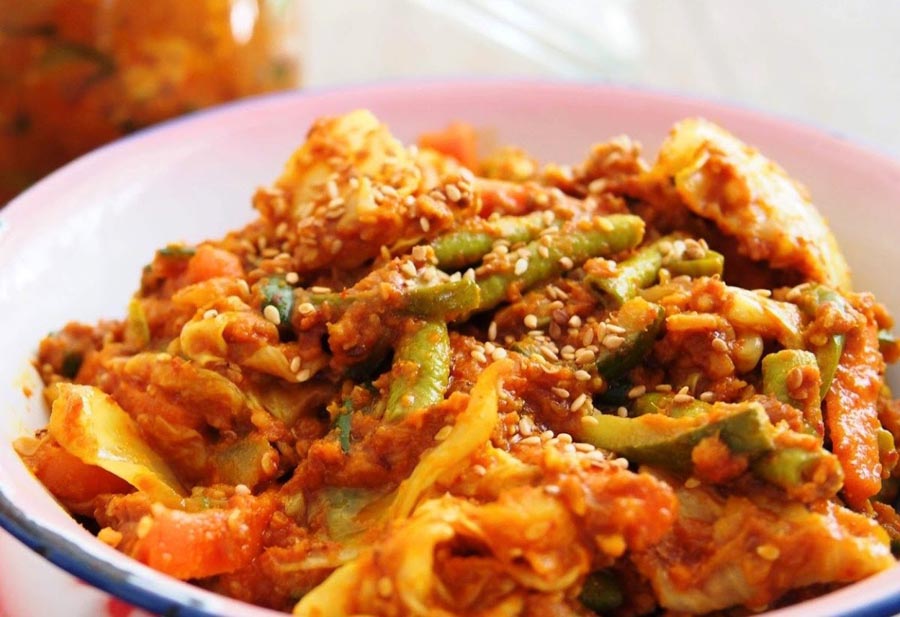
Image by Delishably
Put this pickled medley together:
- Cut two cucumbers and one carrot lengthwise, about 3.5 centimetres each piece. Roughly chop one quarter cabbage (150 grams). Take 4 slices of pineapples and cut them into about 3.5 centimetres a piece. Then, mix all with one tablespoon of salt and leave in a colander to dry for about 30 minutes.
- Blend 5 shallots, 6 fresh red chillies, and 1 teaspoon of turmeric powder with 30ml of water.
- On a wok over medium heat, stir-fry this paste from the blender until it is aromatic. Add 50ml of rice vinegar and a tablespoon of sugar to taste. Then add your chopped veggies in and mix till well incorporated.
- Optional: White sesame seeds
- Once it’s cool, keep it in the fridge and steal a bite of this juicy snack anytime!
Savour some sauerkraut
Sauerkraut is typically tart, with an aroma that’s almost flowery sometimes, owing to the presence of yeast. Because of its uniquely piquant flavour profile, it makes a refreshing neutraliser to rich meats that get a little too “jelak”! The process of making sauerkraut is unique, as it is made from lacto-fermentation, with no pickling agent used.
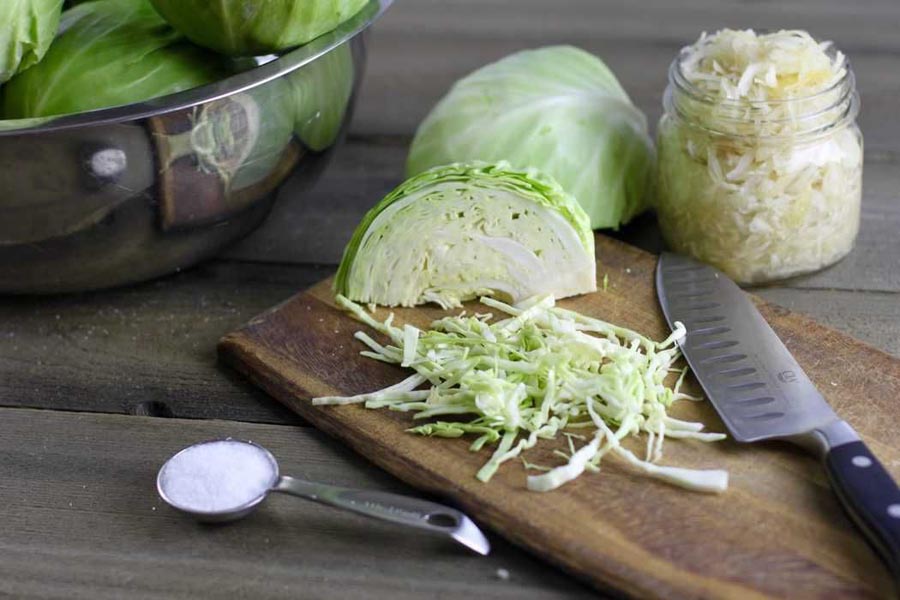
Photo by The Real Food Dietitians
Here’s how to make an easy sauerkraut:
- Slice 1 head of green cabbage into eight wedges. Then make very thin slices crosswise across each wedge, into very thin ribbons. Move the cabbage ribbons into a large bowl.
- Sprinkle 1.5 tablespoons of sea salt onto your cabbage, working the salt into the cabbage by massaging it and squeezing it with your hands. After about 10 minutes, your cabbage will turn watery and limp, becoming more like coleslaw than raw cabbage.
- Optional: Add 1 tablespoon caraway seeds to your cabbage
- Transfer all your cabbage into a mason jar, making sure to pour in any liquid that released when you were massaging the cabbage into the jar as well. Make sure that the cabbage stays submerged beneath the liquid by putting a smaller jelly jar into the mouth of the jar and weigh it down!
- Then cover the mason jar with a cloth, and secure it with a rubber band. Let your sauerkraut ferment for at least 3 days and as long as 10 days, then seal.
Your sauerkraut will keep for at least two months without refrigeration.
Just call me chutney
Chutney is a vibrant condiment that can capture all the most flavourful aspects of your favourite fruits and vegetables. There’s no one way to make it, and you can even layer your spices to craft a chutney completely your own. Feeling peachy? Make a peach chutney!
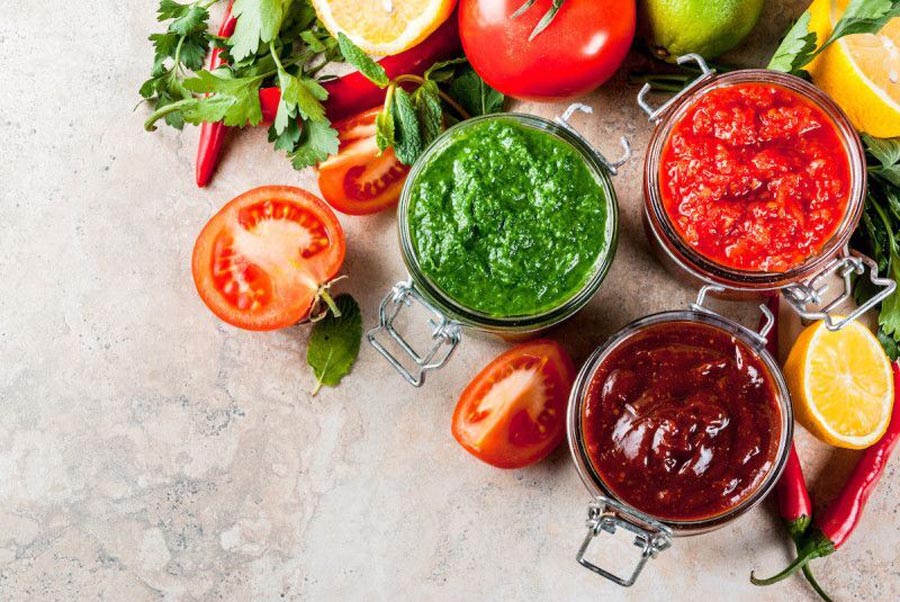
But for starters, use your leftover tomatoes for tomato chutney:
- Peel, core, and dice 12 tomatoes. Combine these with ¼ cup minced garlic, 1 cup of chopped onions, ¾ cup brown sugar, ¾ cup granulated sugar, 1.5 cups apple cider vinegar, 1 tablespoon of salt, 1 lime’s zest and juice, 1 tablespoon of ginger, ½ teaspoon of cumin, and ½ a teaspoon of black pepper.
- Optional: chilli flakes
- Bring all the ingredients to a boil, then reduce it to a simmer and let it cook for two hours, or until the chutney is slightly thicker.
- Transfer the chutney into a glass jar that has been warmed in a water bath.
- Let cool for 24 hours before storing in a cool, dark place.
Let’s make a dill
Typically made of pickled cucumbers and dill to season, dill pickles are so easy to eat that you could munch on them plain. In fact, some even take to the taste of pickle juice from dill pickles, sipping on every little bit of it. Others add the juice to their cooking.
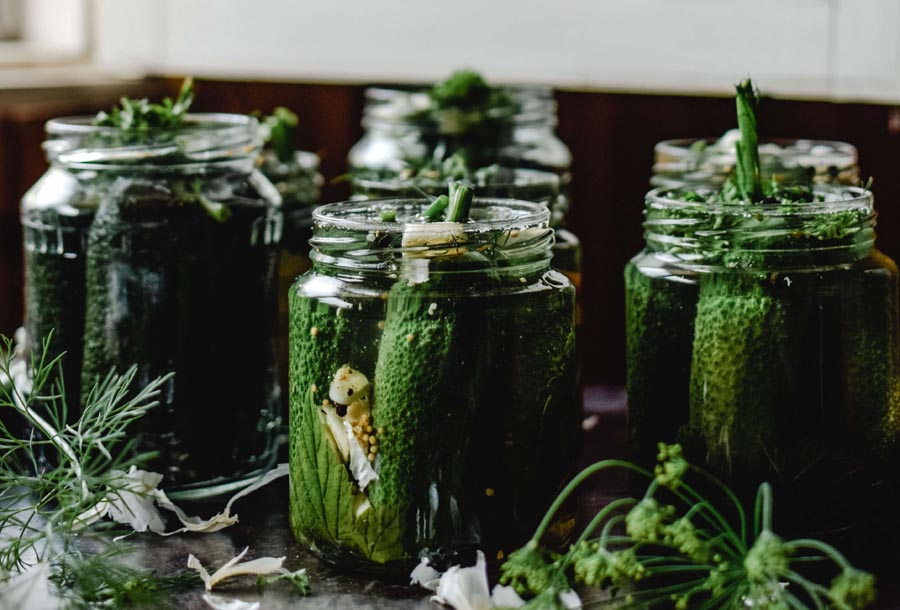
Make these juicy refrigerator pickles in an instant:
- Cut 2 leftover cucumbers into quarters, lengthwise.
- Then stir 3.5 cups water, 1.25 cups white vinegar, 1 tablespoon sugar, and 1 tablespoon sea salt over high heat. Once it’s boiling, remove it from the heat and let it cool completely.
- In a large glass or plastic container, combine the cut cucumbers with 2 whole cloves of garlic, and 2 heads of fresh dill. Then pour the cooled vinegar mixture over this to submerge everything.
- Seal the container with a lid and refrigerate for at least three days before digging in, or slurping on some pickle juice.
Why you should relish the art of pickling
Much like many of our favourite foods, the art of pickling was derived from the recognition that food is a precious resource. Pickling helps to preserve the value of our foods to the fullest, and it’s a tradition well worth continuing when we’ve got such quality ingredients.
Finding creative ways to reduce your food waste is one of the best ways to keep your food-saving habits sustainable and fun! Try making your own pickles soon, and don’t hold back on experimentation. With pickling, there are no hard and fast rules.
